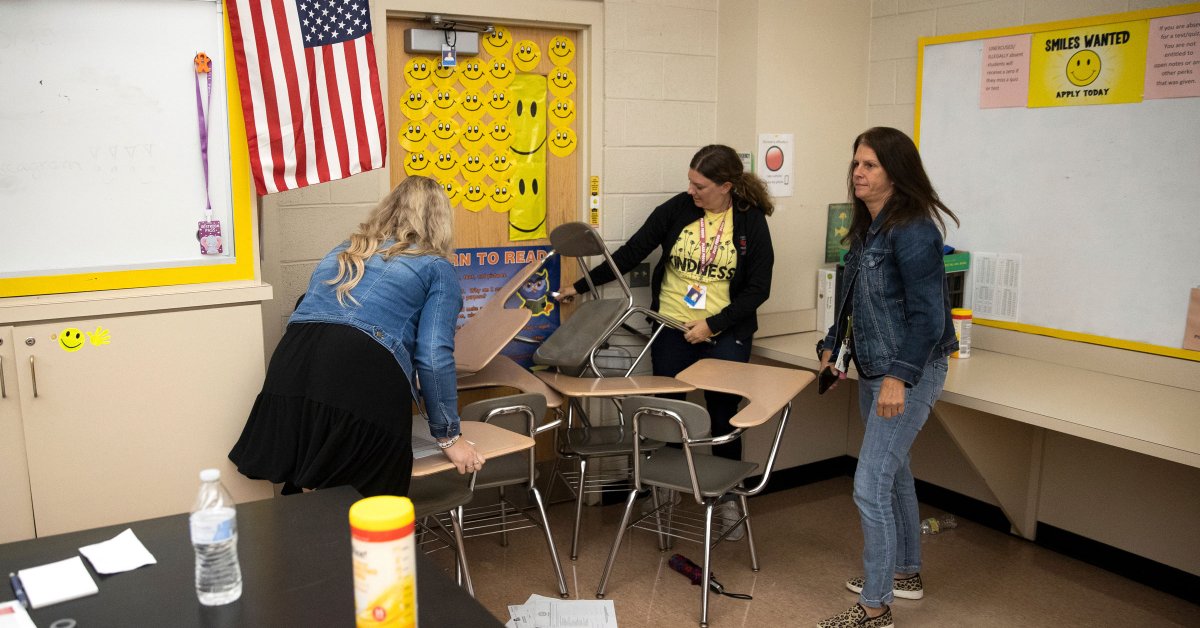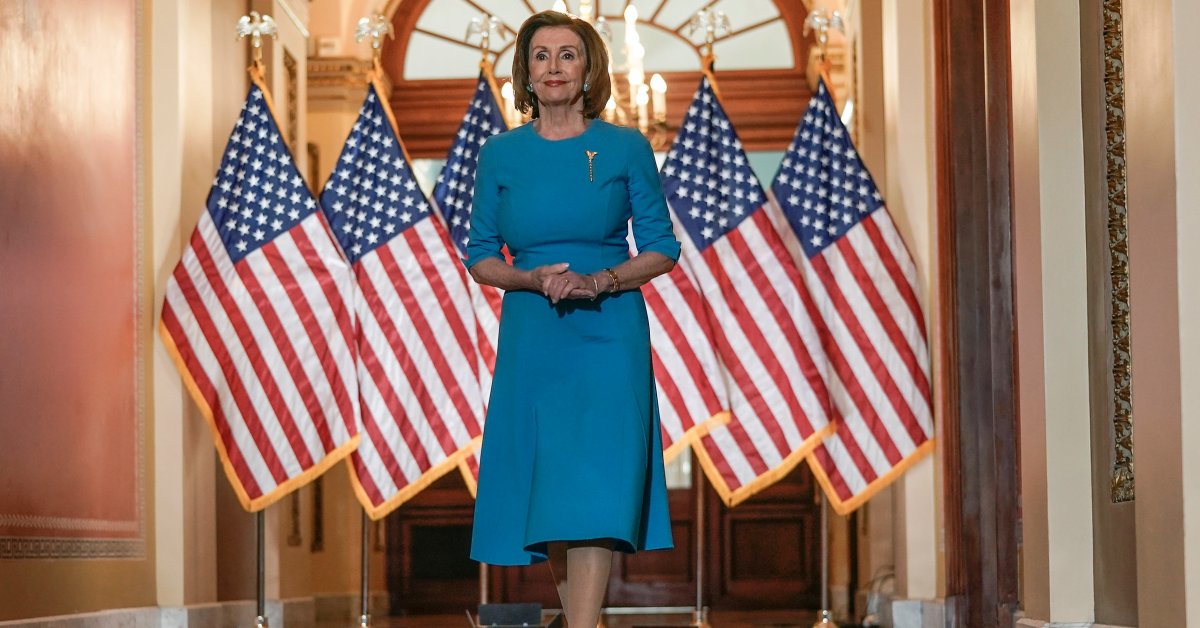How to Make Active Shooter Drills Less Traumatizing
When the Snowflake-Taylor police department in the high desert of Arizona conducted an active shooter drill at Snowflake High School in October 2024, students didn’t take it seriously, says police chief Bobby Martin. They were wandering around campus, laughing, having conversations, and not locking doors.
So at the start of this year, the police department decided to make things more realistic: they’d hold a drill without advance notice, and perhaps students would pay attention. But when the announcement went over the PA system that there was an active shooter on campus—and that this was not a drill—students panicked. One student texted her mother that there was an active shooter and that she loved her, adding “we might die.” The PA recording, made by a principal who had not been at the school for a while, caused more confusion and panic than anticipated, Martin says.
“That was not how we were intending it to go by any means,” he says. “But the reaction after that was that we should back off and not do it at all, but that’s not a solution, because if anything happens, you need to be prepared.”
School districts and law enforcement across the country have been grappling with this issue as school shootings continue unabated. There have been 208 school shootings so far in 2025, after 336 in all of 2024, according to the K-12 School Shooting Database and now, more than 95% of public schools perform lockdown drills annually.
But as Snowflake learned, these drills can be traumatic to students, especially if they are conducted in the wrong way. One 2020 study analyzed conversations over Twitter (now known as X) and Reddit before and after active shooter drills occurred, and found that the drills were associated with an increase in depression, stress, and anxiety among children and their parents, and that concerns about death increased by 22%. Words like “blood,” and “pain” became more consistent in social media posts in the 90 days after a school drill, the study found.
Still, most experts agree that practicing for active shooter events is beneficial, so doing away with drills entirely is usually not an option. Schools want to protect students without traumatizing them, a balancing act that, as Snowflake found, is very difficult.
It’s something that has drawn the attention of lawmakers. “There is broad consensus affirming what parents already know—mandatory active school shooter drills are deeply traumatizing for children and have no evidence of decreasing fatalities,” Democratic Congresswoman Marie Gluesenkamp Perez of Washington wrote on X in September, announcing a Congressional amendment that would prohibit taxpayer dollars from being appropriated to schools that do not let students opt out of active shooter drills.
And in 2021, a bill introduced by Colorado Democratic Congressman Ed Perlmutter would have ordered the National Academies of Science, Engineering, and Medicine, to study and identify best practices for maximizing the effectiveness of school safety drills as well as the mental health effects of these drills. The bill was eventually folded into an Appropriations bill and passed; the National Academies report came out in August 2025.
But an emerging body of research shows that there are best practices for how to prepare students for active shooters in schools—though schools across the country may not be following them.
How to better prepare students for active shooters
The first thing to know is that drills are effective, says Jaclyn Schildkraut, the executive director of the Regional Gun Violence Research Consortium at the Rockefeller Institute of Government. But there’s a difference between lockdown drills and active shooter drills, and there’s evidence that lockdown drills are more effective and less traumatic than the latter, she says.
Lockdown drills teach students and teachers to lock the door of their classrooms, turn off the lights, be quiet, and get away from where they can be seen. There are only four instances where someone has been killed behind a locked door in a school shooting, and in one of those instances, the lock failed, she says. “The number one lifesaving device in an active shooter event is the door lock,” she says.
Though it might seem simple to lock a door and get students away from the line of sight, there’s definitely a need to practice this, she says, because students and teachers alike need to build muscle memory. “Situations like active shooter events are incredibly stressful,” she says. “But your body will do what you have trained it to do.”
The advantage of a lockdown drill is that it includes a very specific set of procedures which teachers and students can follow, she says. In contrast, calling something an active shooter drill can mean many different things, and students and teachers can be asked to perform in a variety of different ways—including acting out a drill with simulations, which research suggests is more traumatic than it is valuable.
“We don’t set a school on fire for a fire drill, we don’t need to simulate an active shooter to practice a lockdown,” Schildkraut says.
The August 2025 report from the National Academies of Science, Engineering and Medicine, argued that states should prohibit the use of drills that simulate an active shooter being in the school, as well as sensorial drills. These exercises are often extremely realistic, sometimes using fake bullets or the noise of gunshots, and the report concluded that they are one of the practices that “professional consensus largely agrees should not be implemented due to the high potential to cause harm.”
“The idea is you’re simulating a crisis event because you’re trying to have people be able to respond in a context that would be similar to what might happen in real life,” says Dr. David Schoenfeld, the director of the National Center for School Crisis and Bereavement at Children’s Hospital Los Angeles and one of the people who helped prepare the report. “And so then it feels like real life, and then it’s more distressing.”
Of course, schools also shouldn’t be too vague when talking to students about why they’re doing a lockdown drill. Saying that they’re doing a drill in case a moose or bear gets into the hallways may make the situation not seem serious or genuine to children, Schoenfeld says. Instead, teachers could say they’re locking the door in case someone wants to start a fight, for instance.
Schools should also not pretend that a drill is an actual active shooter event, as happened in Snowflake, says Schildkraut. People need to know that they are just practicing and that they are not in a real-world emergency.
Another practice that can do more harm than good is something called an options-based drill, which essentially asks teachers and untrained professionals to decide how to respond to an active shooter in the moment. These include places that teach people a so-called “run, hide, fight” response in which people have to decide how to react, and ALICE training, which is used in many school districts and which gives people options including Alert, Lockdown, Inform, Counter, and Evacuate.
“The options-based drills really come closer to recreating the situation,” says Schoenfeld. “But they have not been shown to lead to better actions on the part of participants, and there’s some limited research that has kind of suggested it may actually work counter to what you’re trying to achieve.”
What works is for schools to let parents and students know in advance that there is going to be a lockdown drill, to be told that they are going through a drill while they are doing it, and for teachers to model calm behavior during that lockdown drill. Then, afterwards, there should be time for students and teachers to discuss what happened, says Aurora Vasquez, the senior vice president of state policy for Sandy Hook Promise, a nonprofit created by people whose loved ones were killed in the 2012 Sandy Hook school shooting.
“Students have given examples of being in a quiz when an active shooter drill happened and then going back to the quiz right after,” she says. “They said that’s not super helpful for them, as they want to debrief.”
Finally, Vasquez says, students should be allowed to opt-out of any drills. That way, if they’ve encountered previous trauma or violence, they can avoid generating even more trauma by practicing active shooter drills.
“Research has shown that if a drill is conducted as a lockdown drill without options based approaches, without simulations, without high intensity, that for the vast majority of kids, it does not need to cause a great deal of distress,” Schoenfeld says.
Should drills happen at all?
There are many states taking this research and trying to apply it to how they prepare students for active shooter events. In 2024, New York state banned realistic school lockdown drills, barring the use of props, actors, or simulations. The same year, California also banned the use of simulated fire in active shooter drills and required that parents be informed that a drill is taking place.
But many other states are continuing on as usual—or even going the opposite way. In Missouri, for example, a new law requires students to participate in active shooter exercises in the 2026-2027 school year; staff may also participate in simulated active shooter drills. The simulations can be jarring: in a video that recently surfaced on social media, a trainer shoots blanks in the air in front of school lockers as staff at a Missouri school were going through training exercises.
The discrepancies between what states are doing and what research suggests they should be doing is one reason Rep. Gluesenkamp Perez introduced the Congressional amendment prohibiting schools from receiving certain federal funds if they don’t allow students to opt out of active shooter drills. The amendment would not affect lockdown or fire drills, only active shooter drills.
“If I have to sign a permission slip for a child to be involved in a ropes course, there feels like there’s a cognitive dissonance if I’m not able to opt out of an active shooter drill,” says Gluesenkamp Perez, who decided to introduce the amendment after her three-year-old had to participate in an active shooter drill in daycare and started talking about shooting bad guys for the first time in his life.
The bill passed through the House Appropriations Committee on Sept. 9. The next step would be for the full House to vote on the bill.

Others say that the controversy over drills presents an opportunity to rethink how we stop gun violence in the first place. “The discourse around gun violence prevention in schools has for a very long time focused on what can we be doing in the moment of a violent act,” says Sonali Rajan, senior research director at Everytown for Gun Safety, the largest gun violence prevention organization in the U.S. “That’s opposed to stepping back and saying, what are all the ways in which we can and should be meaningfully preventing this kind of violence from happening in the first place?”
Everytown says the country should be thinking more about prioritizing true gun violence prevention, which would ideally render the need for active shooter drills in schools obsolete.
Prevention includes behavioral threat assessment—essentially training students and staff to intervene at the earliest warning signs that someone may be capable of potential violence, and helping divert those people to treatment. Prevention also includes increasing access to mental health professionals and social support, she says, as well as common sense gun safety laws and practices like secure firearms storage.
“What we should be calling for is for our elected officials to use the tools that we know work to render these drills obsolete,” she says. “The burdens we are putting on our schools and our kids to prepare for the potential of this kind of violence is, frankly, unacceptable.”
Still, as school shootings continue apace, many districts don’t have the option to focus only on gun violence prevention. Many states mandate that districts hold a certain number of lockdown or active shooter drills every year. It’s often up to them, though, to decide what those drills look like.
Arizona, for instance, has a four-drill per year mandate, says Martin, the Snowflake police chief. The school district has changed its policies significantly since the drill that students were told was real, and now students get alerts on their phones and get notified that the drill is going to happen ahead of time. But, says Martin, “to not do the drill is not beneficial to anybody.”
Share this content:




Publicar comentário